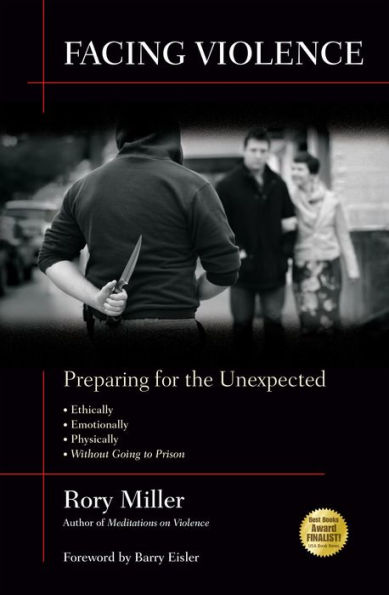Table of Contents
Contents V
Acknowledgements Ix
Foreword Xl
Introduction Xlll
Chapter 1 Legal And Ethical 1
1.1 legal (criminal) 2
1.1.1 affirmative defense 2
1.1.2 elements of force justification 3
1.1.2.1 the threat 6
1.1.3 scaling force 7
1.1.4 civil law 9
1.1.5 articulation 10
1.2 ethics 12
1.2.1 the conscious stuff: capacity 13
1.2.1.1 beliefs, values, morals and ethics 15
1.2.2 the unconscious stuff: finding your glitches 20
1.2.3 through the looking glass 22
Chapter 2 Violence Dynamics 25
2.1 social violence 26
2.1.1 the monkey dance 26
2.1.2 the group monkey dance 30
2.1.3 the educational beat-down 31
2.1.4 the status seeking show 33
2.1.5 territory defense 35
2.2 asocial violence 36
22.1 predator basics 37
2.2.2 two types 38
2.2.3 two strategies 39
Chapter 3 Avoidance 41
3.1 absence 42
3.2 escape and evasion (e&e) 47
3.3 de-escalation 50
3.3.1 know thyself 50
3.3.2 know the world you are in 53
3.3.3 know the threat 61
3.3.4 the interview 72
3.3.4.1" de-escalating the monkey dance 73
3.3.4.2 de-escalating the group monkey dance 76
3.3.4.3 de-escalating the resource/blitz predator 78
3.4 altered mental states 85
3.4.1 rapport building 86
3.4.2 the psychotic break 87
3.4.3 excited delirium 88
3.4.4 fakes 89
3.5 hostage situations 91
Chapter 4 Counter-Ambush 93
4.1 foundation 93
4.1.1 elements of speed 95
4.1.2 the perfect move 99
4.2 examples 104
4.2.1 attack from the front 104
4.2.2 attacked from the rear 115
Chapter 5 The Freeze 119
5.1 biological background 120
5.2 what freezing is 123
5.3 types of freezes 124
5.3.1 tactical freezes 125
5.3.2 physiological freezes 125
5.3.3 non-cognitive mental freeze 126
5.3.4 cognitive freezes 128
5.3.5 social cognitive freezes 129
5.3.6 the pure social freeze 132
5.4 breaking the freeze 132
5.5 anti-freeze habit 133
Chapter 6 The Fight 135
6.1 you 136
6.1.1 this is your brain on fear 137
6.1.2 and this is your body 140
6.1.3 training and you 142
6.1.4 mitigating the effects 143
6.2 the threat(s) 145
6.3 the environment 148
6.4 luck 151
6.4.1 gifts 151
6.42 managing chaos 152
6.4.3 discretionary time 153
6.5 the fight 154
6.6 a letter to johann-on intervening 163
Chapter 7 After 169
7.1 medical 170
7.1.1 as soon as you are safe 171
7.1.2 hours to months 172
7.1.3 long-term 174
7.2 legal aftermath 175
7.2.1 criminal aftermath 175
7.2.2 civil 182
7.2.2.1 the threatening letter 183
7.2.2.2 difference 184
7.3 psychological aftermath 186
7.3.1 story telling 187
7.3.2 change 189
7.3.3 feelings 190
7.3.4 questions 191
7.3.5 victim power 193
7.3.6 friends, society, and alienation 196
7.4 retaliation 203
Afterword 205
Glossary 207
Further Reading 211
on the human monkey 211
on the legal stuff 212
on dynamics of violence and criminals 213
on people 214
other books and resources 216
and, finally, some people 218
Index 221



